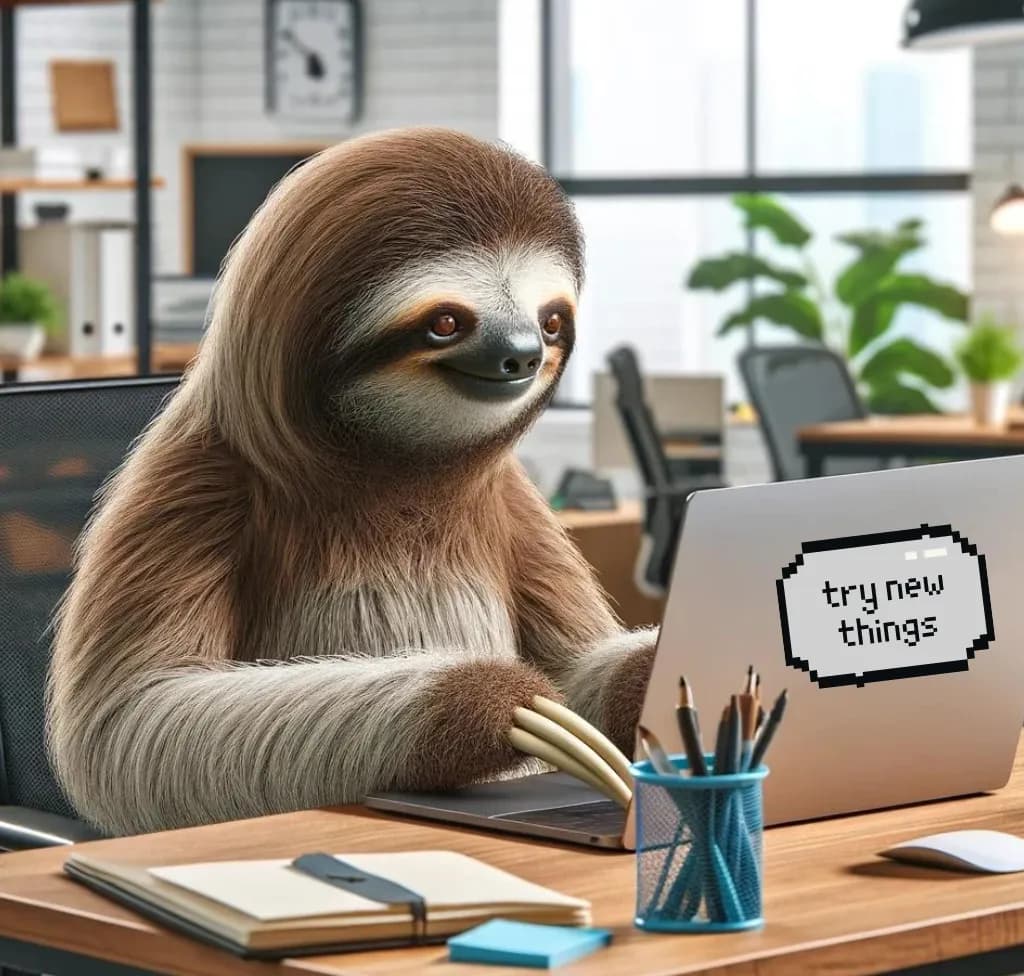
TL;DR - A post about trying to make advocacy / non-profit communications a bit more interesting by using DALLE3 generated animals to communicate about policy objectives and things like climate change.
If you want to skip the intro and just get to the point about how to make these cute delights, click here.
One of the only downsides of moving to a code-centric blogging platform (Astro CMS, I love it!) is that I’m finding it makes it a little bit harder to monitor the flow of what you’re writing and keep on topic!)
I usually try to keep my work projects and tech interests pretty separated, but thought I’d share a little bit about an ongoing project to … try bring a bit of novelty and freshness to how things are done in my industry.
I’ve spent most of my career (so far) doing communications-related things at tech companies.
My first foray into the space was (fresh out of college) helping a friend to market a political canvassing technology.
From the humble origins of 4 people in a tiny office, Ecanvasser has gone on to become a recognised brand in the field (this has almost nothing to do with my magic touch and probably a huge amount to do with its CEO, Brendan’s perseverance).
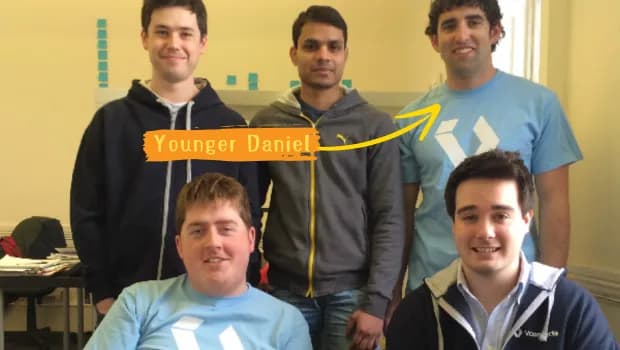
After I moved to Israel, I briefly toyed with pursuing my original plan of becoming some kind of a journalist. But I couldn’t make the salary work which was (yes, actually) barely an inch above minimum wage (Israel’s cost of living, meanwhile, is among the highest in the developed world).
I took another job managing marketing communications (this time at a company selling an IoT gateway device) and have been doing pretty much that ever since. I love both creative expression and technology and so far embracing the two has provided the basis for a reasonably successful career.
How I Ended Up Working In Non-Profit Communications
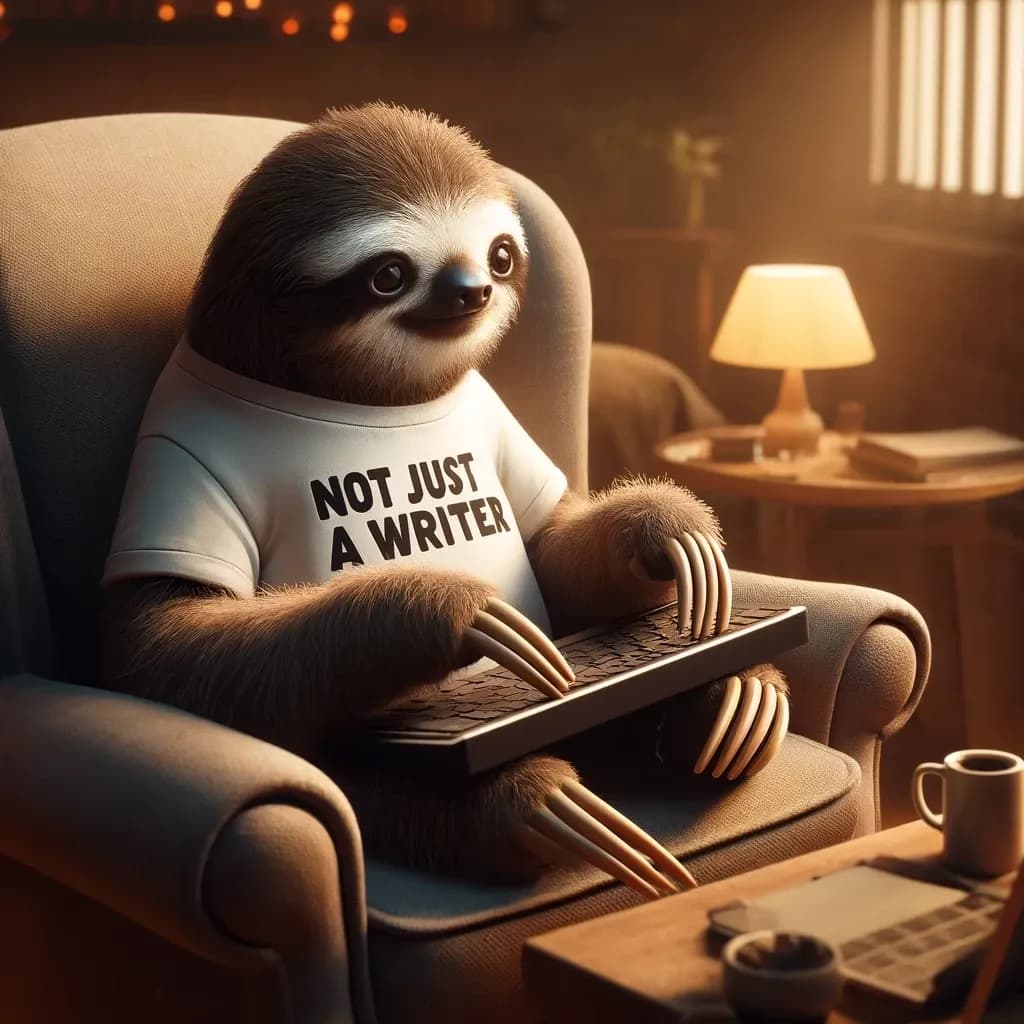
After leaving the IoT company, I spent a several years running a tech ghostwriting business on a full-time basis.
Running my own business was fulfilling but tiring. On the plus side, it gave me a lot of exposure to companies working in different tech industries ranging from cybersecurity to backup and disaster recovery and AI/ML.
After working with more startups and companies than I can probably care to remember, I sometimes found myself wondering about the “bigger picture”.

Among all the interesting “value props” I’ve seen, what’s really significant here and what are incremental advances that are going to be forgotten about in a few years?
I also began missing some of the perks of office life (like colleagues) while there were others that I was happy to have left behind (open offices, don’t miss them one bit). While I enjoyed helping tech founders write about technology, I also found that emphasising myself as a writing business (trading name: DSR Ghostwriting) was a strategic mistake that could really only be fixed by undertaking a huge rebranding exercise that I neither had time nor appetite for.
Writers, unfortunately, are the permanently undervalued workhorses of the marketing world and if you brand yourself as a “writer,"" getting clients to see you as anything other than a human wordsmith content-generating machine can be extremely difficult. So I returned to the world of conventional employment for two reasons: to get away from the hamster wheel of juggling clients and to use and develop skills beyond just making content appear on the internet.
Sir Ronald’s Mission To Drive The ‘Impact Revolution’
The first opportunity that seemed interesting to me was working with an individual (Sir Ronald Cohen) who has done lots to advance the cause of social finance and who has an intriguing vision for something called impact which seeks to (I know this sounds like a steep claim) change the world for the better.
It proposes to do this through tinkering with the financial system (which sounds highly nefarious which is why to the best of my knowledge we have never used that specific choice of wording!)
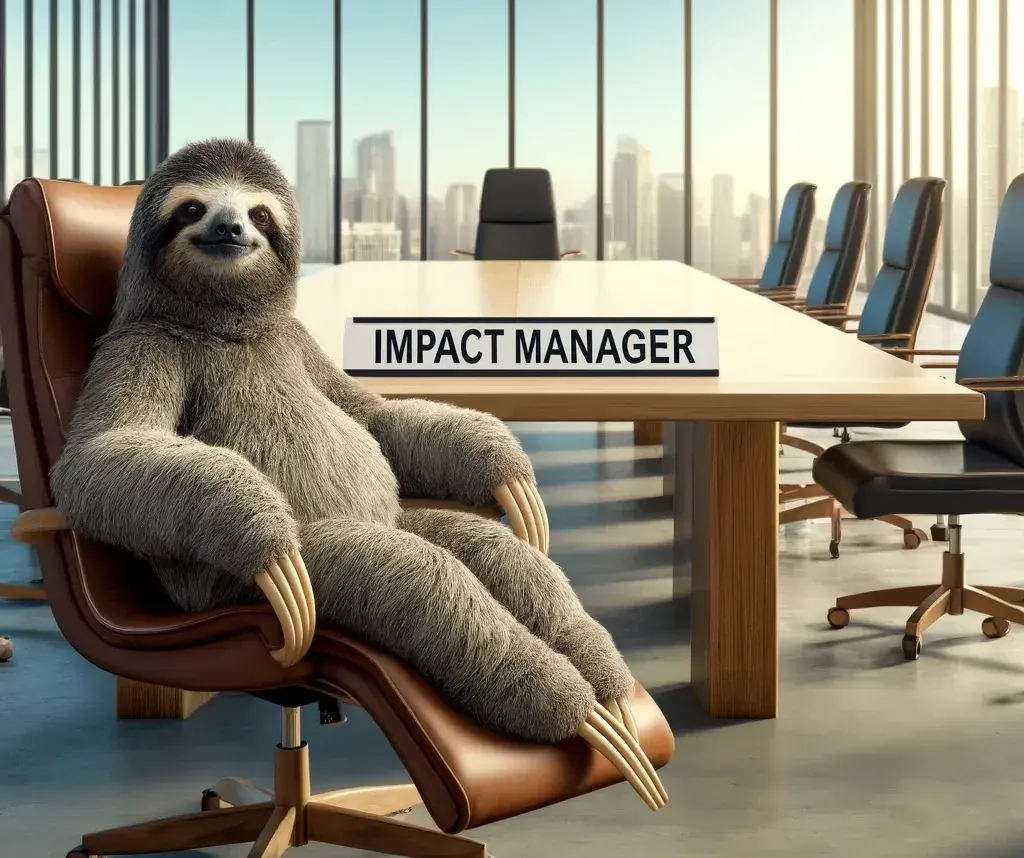 Impact’s idea to improve the financial system does not involve installing sloths onto corporate boards, but it does have lots of other interesting ideas
Impact’s idea to improve the financial system does not involve installing sloths onto corporate boards, but it does have lots of other interesting ideas
Specifically, impact endorses the view that companies have manifold impacts in the social and environmental spheres. For instance, if an employer compensates a workforce well, it may help them to advance in life (for instance by qualifying for mortgages) and, in turn, increase the economic prosperity of their surrounding communities (because these prosperous workers have disposal income to inject into local businesses).
On the flip side, a predatory employer can reinforce gender or race-based patterns of discrimination or pay workers a salary that essentially confines them to the desperate plight of the so-called “working poor.” Likewise governments can achieve impact ineffectively or more effectively depending upon how they choose to disburse budgets. Impact also has interesting ideas about how private and public institutions can come together to tackle social and environmental challenges. But all those details are for another day.
Newsflash: Nobody Cares About The Fact That You Went To A Conference

Now here’s the part of the blog post that I really hope doesn’t get people’s back up. At the very least, I expect to engender some prickly reactions.
It’s not directed at anyone in particular (I promise). But is a definite trend that I’ve noticed about how this industry (impact investing) does communications.
When Non-Profit Communications Goes All Corporate It’s Kind Of Offputting
Impact investing is a policy focused discipline that - it’s no exaggeration to say - attempts to change the world.
In the course of attempting to do this, however, it seems to create an especially prodigious amount of all of the following manifestations of bureaucratic activity:
- Working groups
- Conferences
- Webinars
- Panels
- Reports
My impression is that to the majority of folks not in the industry (and those are always to the fore of my mind as a communicator) this all begins to seem a big meh very quickly. “Really?! This Again?!” I can imagine them saying.
Worse, I think it creates the impression of an extremely disconnected echo-chamber talking endlessly about the world’s problems without doing much fo really understand or fix them. I’m not saying for a moment that this is the reality. But I am saying that the industry seems to often fall into a rut of talking an awful lot about itself.
Battling against a slew of bureaucracy, one little sloth’s on a mission to humanise the narrative
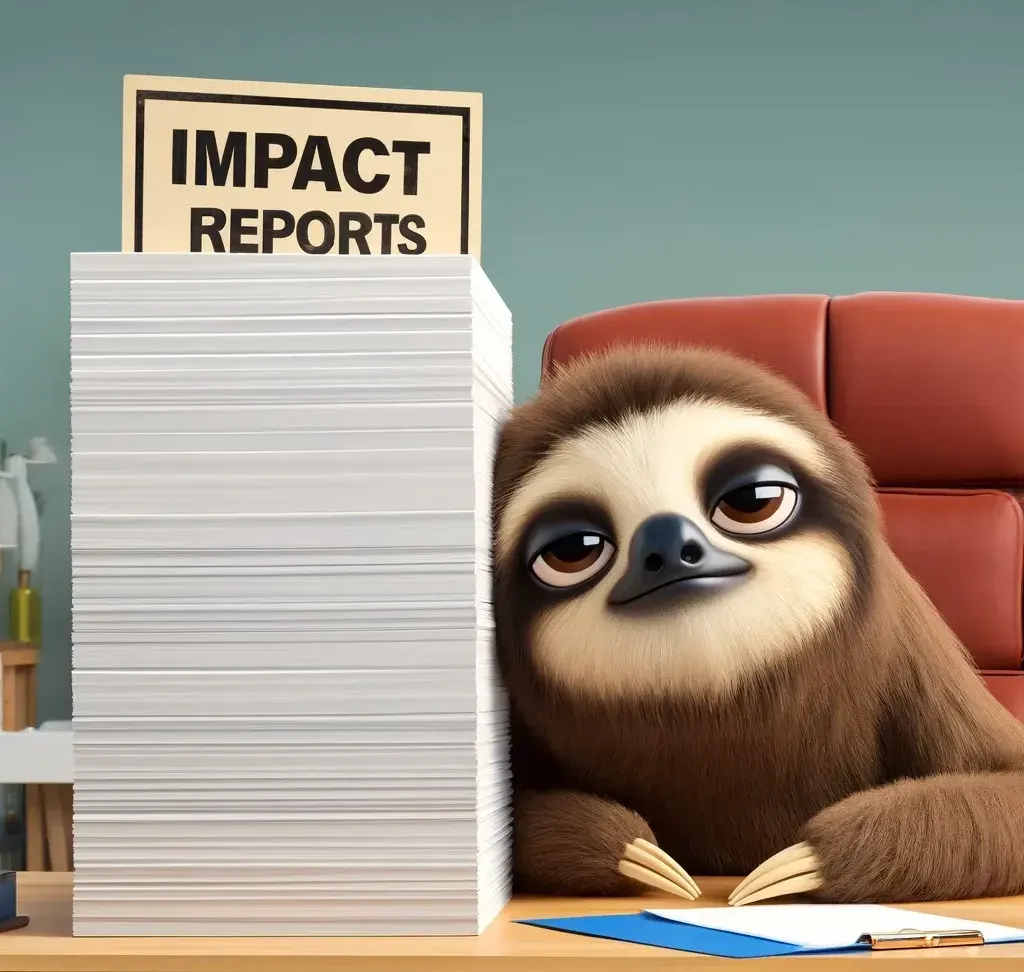
I once attended an “impact conference” (I won’t disclose the organiser). A member of the organising team recounted how an attendee had approached them out of the blue and asked them very bluntly and with an air of irritation “Where are the people?”
The lady working on the event seemed confused as to what this individual meant but I felt like I got their point immediately. If we’re trying to talk about changing the world, those we’re trying to help need to be at the center of the narrative. If those “people” aren’t talked about much less brought to speak, it’s an exercise, merely, in self-importance.
(I left the conversation without sharing that I entirely agreed with the sentiment I think was being conveyed.)
Making AI Generated Sloths Using DALLE3

Firstly let me say this:
I think that mastering communications is a lifetime’s work.
Most people are reasonably proficient in basic competencies like writing and editing. Which is why that I belief that pidgeon-holing ones skillset into those narrow parameters (as I often have) is a terrible mistake.
We’re often translators - trying to bridge the gaps between language experts use and those familiar to most people.
We’re sometimes amateur students of psychology too - attempting to understand the motivations and ambitions of our target market to do a better job at speaking to their inner worlds.
Increasingly, we’re also asked to also know a thing or two about editing video, podcasts, code, and whatever other skillsets are needed to take great ideas and capture them in a format that resonates. Modern communicators have a wide toolbox and we try to think cleverly about the best ways to leverage it.
So when I say that “I have no idea if bringing ideas to life with DALLE3 is going to help or hinder this cause but it’s an A/B test of sorts” I really mean that. But it’s a lot of fun and has me thinking furiously about what it is exactly that we (as an industry, as a collective) are trying to achieve.
How I Make These Photos: Prompt Writing, Regenerations, And Text Elements
Anyway, here’s how this works.
Start with DALLE3 (it’s what I’ve been using the most) or any of the other text-to-image AI generators that are out there.
Next (the hard part) you’re going to want to come up with prompts that capture the image you have in your head that you want to bring to life.
Some of the images I love the most have been very simple. For instance to create the previous photo of a sloth editing a photo of a sloth on a computer (!) I ran:
please create a photo of a sloth editing a photo of a sloth on a computer screen
.. and it was one of those very rare AI generations that I liked on V1.
Other prompts take a lot more refining. Particularly as DALLE3 spits out problematic images that highlight some of the limits of its engine (which of course is always evolving). In other instances, it just highlights parts of the image that you didn’t think about.
For one of the graphics on my new website, I wanted to create an element of a sloth reading a big stack of reports about ‘impact’. However, I didn’t think to explicitly tell DALLE which way the sloth should be looking.
It came up with this. I thought the wide-eyed stare into the (virtual) “lens” was a bit distracting.
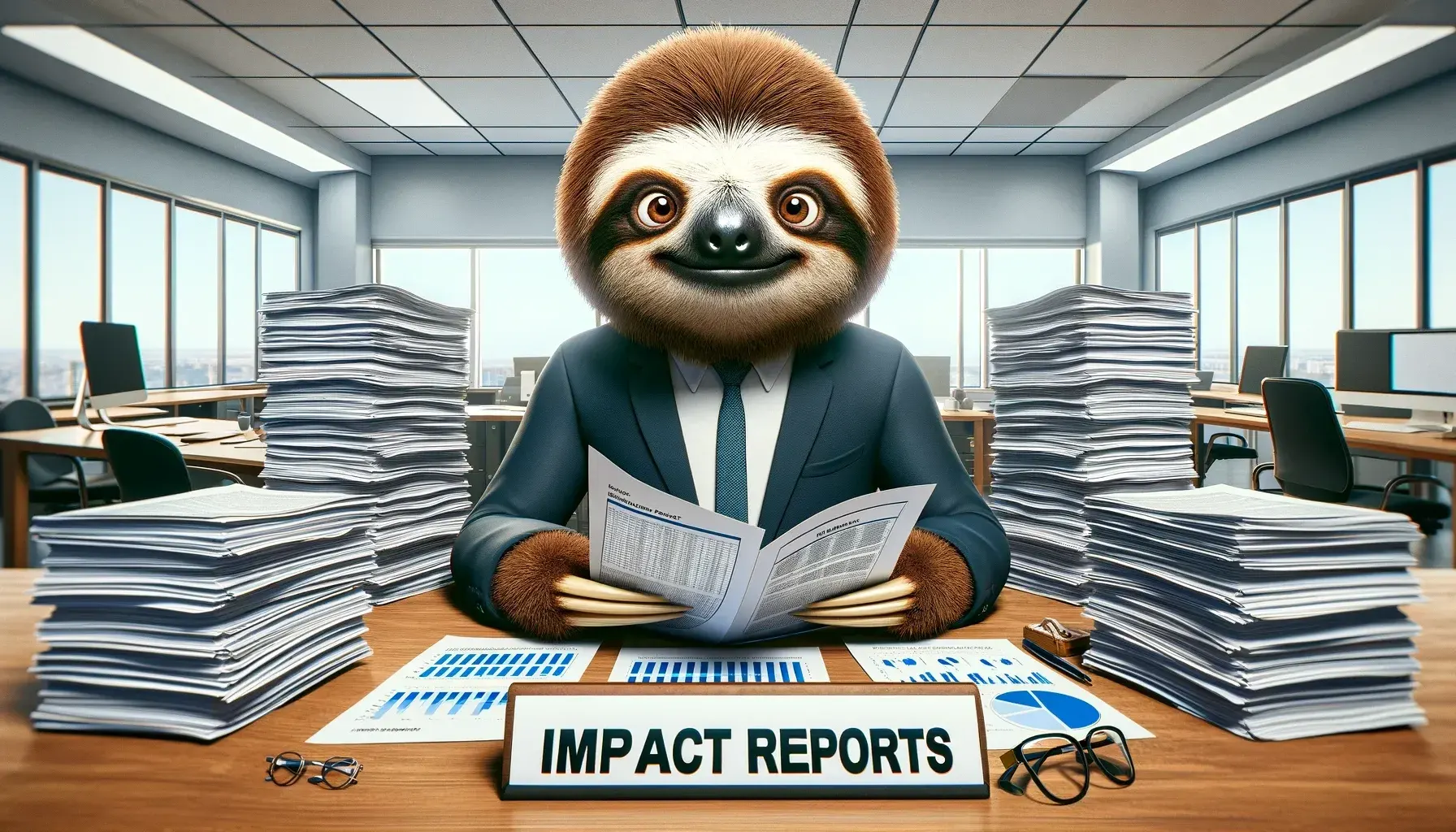
So leveraging DALLE’s ability to parse natural language edits to improve images it has just generated, I responded:
great but the sloth should be looking at the paper and not at the camera
That got me here which I liked a bit better:
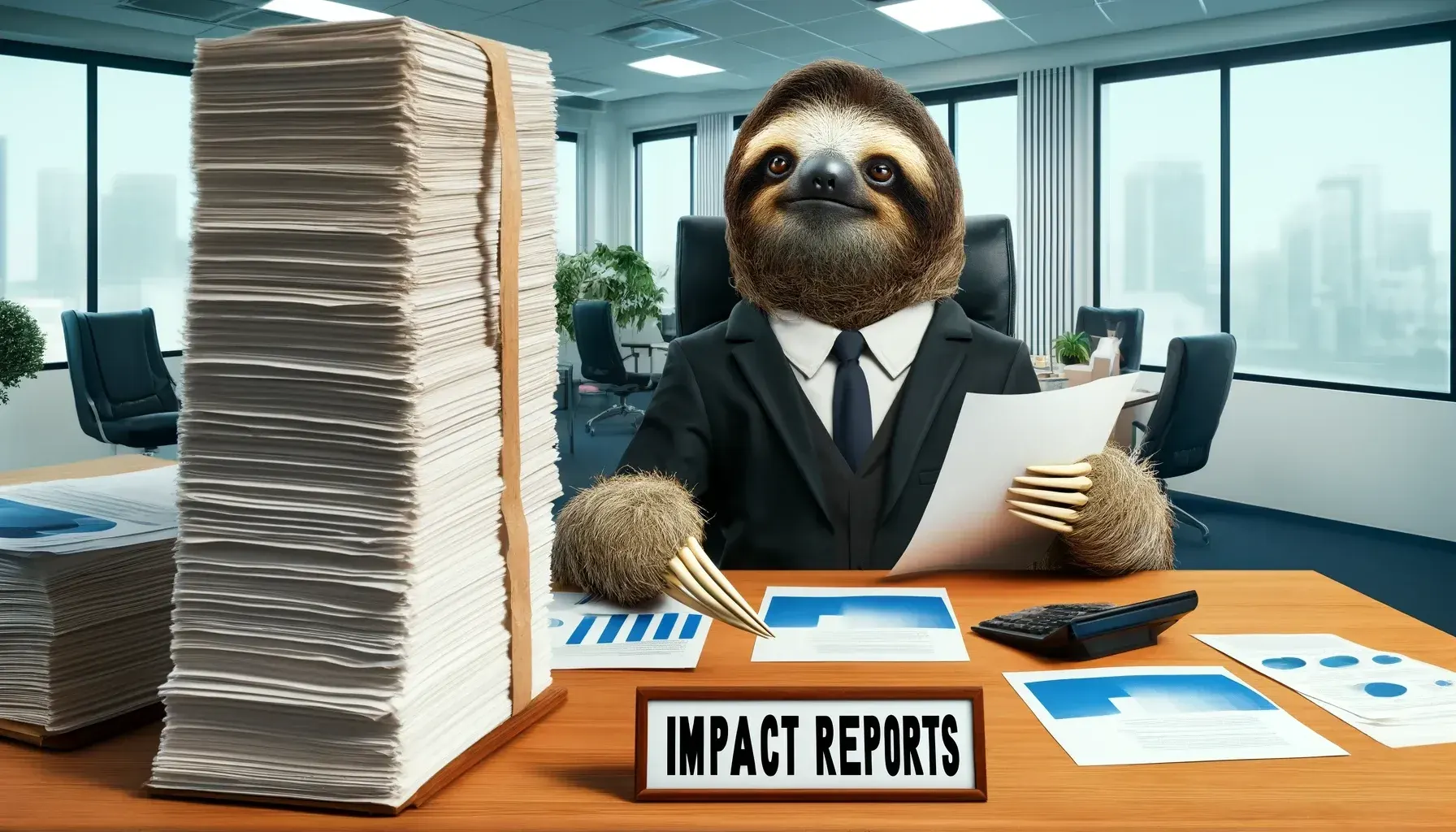
DALLE3 Struggles With Text Generation. This Is My Workaround
Another limitation to bear in mind that is that DALLE currently struggles a lot with text generation.
My adaptation has been to ask DALLE to specifically create blank elements so that I can then add text overlays myself using a separate tool such as Canva.
For instance:
Create a photo of a sloth sitting in an armchair and holding a blank placard
That then allows me to just fill in the text like so:
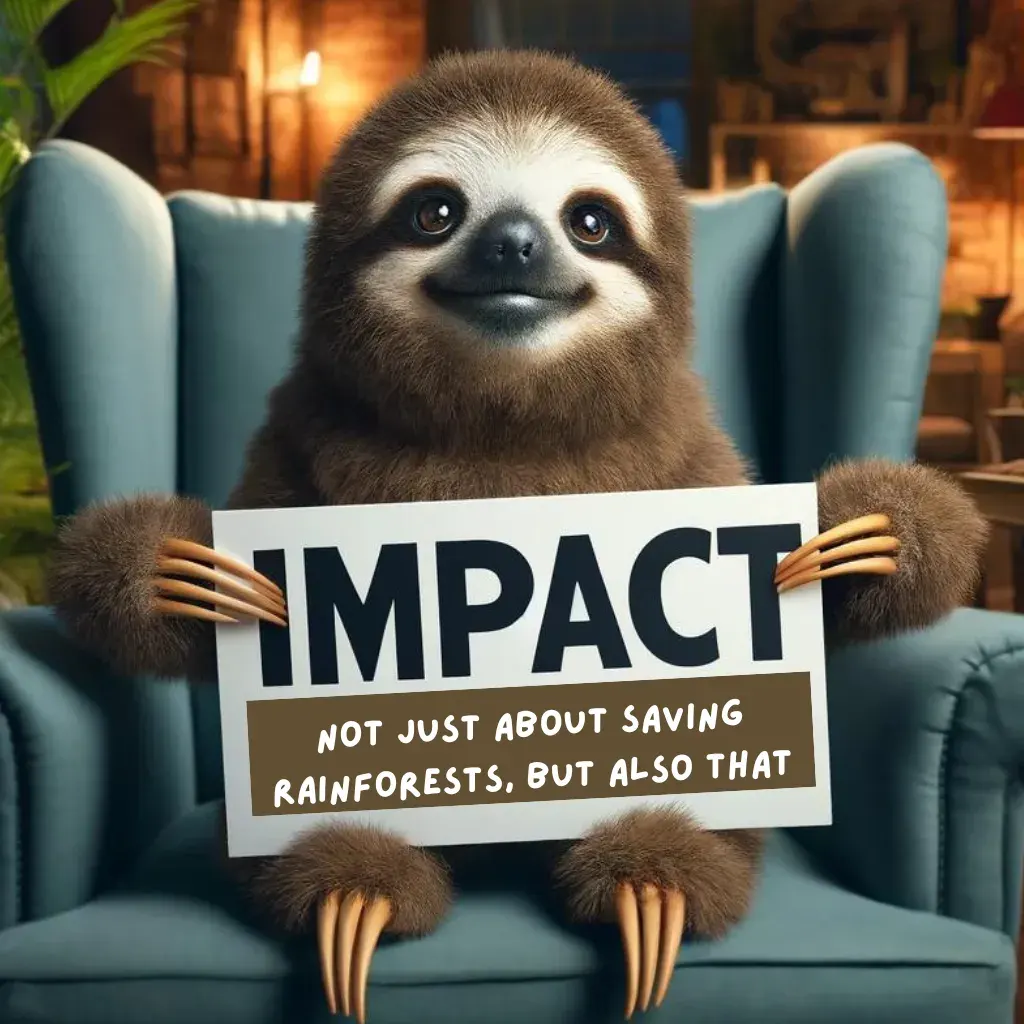
I could share literally hundreds of examples in which DALLE3 has generated photos with bad text, but here’s one example.
There are even AI websites out there solely built to fix the botched text output of other AI generators - although I think that at this time it’s probably better just to do your text designs separately.
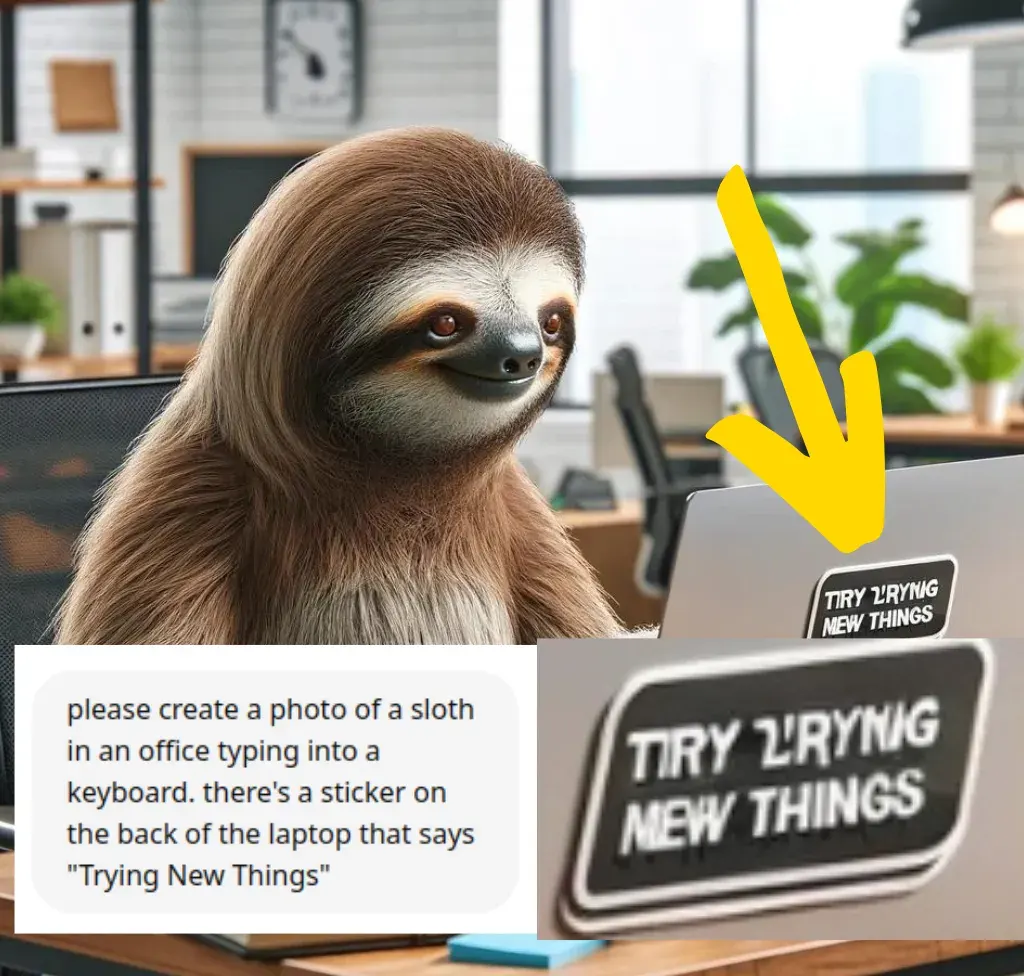
You Can Create Banner Images And Infographics With DALLE Too
I’ve had some success getting DALLE to create visual web elements like horizontal banners and buttons. However the above qualifications apply: frequently they fall down on text. But if you can make those elements separately you can often end up with a surprisingly nice piece of work.
Here’s one, for instance. I don’t have the original prompt that I used but it was something like:
Please create a horizontal banner with a photo of a sloth. Please include a chart and a leaf as icons in the background. Please keep the visual as clean as possible with green and red as emphasised colors"

Using AI-Generated Images For Advocacy Visual Storytelling
I created a visual “story” called “The Story Of Impact” which tells the story of the ‘impact’ movement with periodic AI-generated sloth graphics.
Colleagues seem to have reacted positively to it although I can’t tell yet who’s just being kind.
But here’s how it came out (improvements ongoing and this is really just a proof of concept!)

Rather than use boring stock imagery (or graphics!), I tried to get creative in finding images to make some of the internal pages of the website (like the contact form) a bit more fun and interesting:
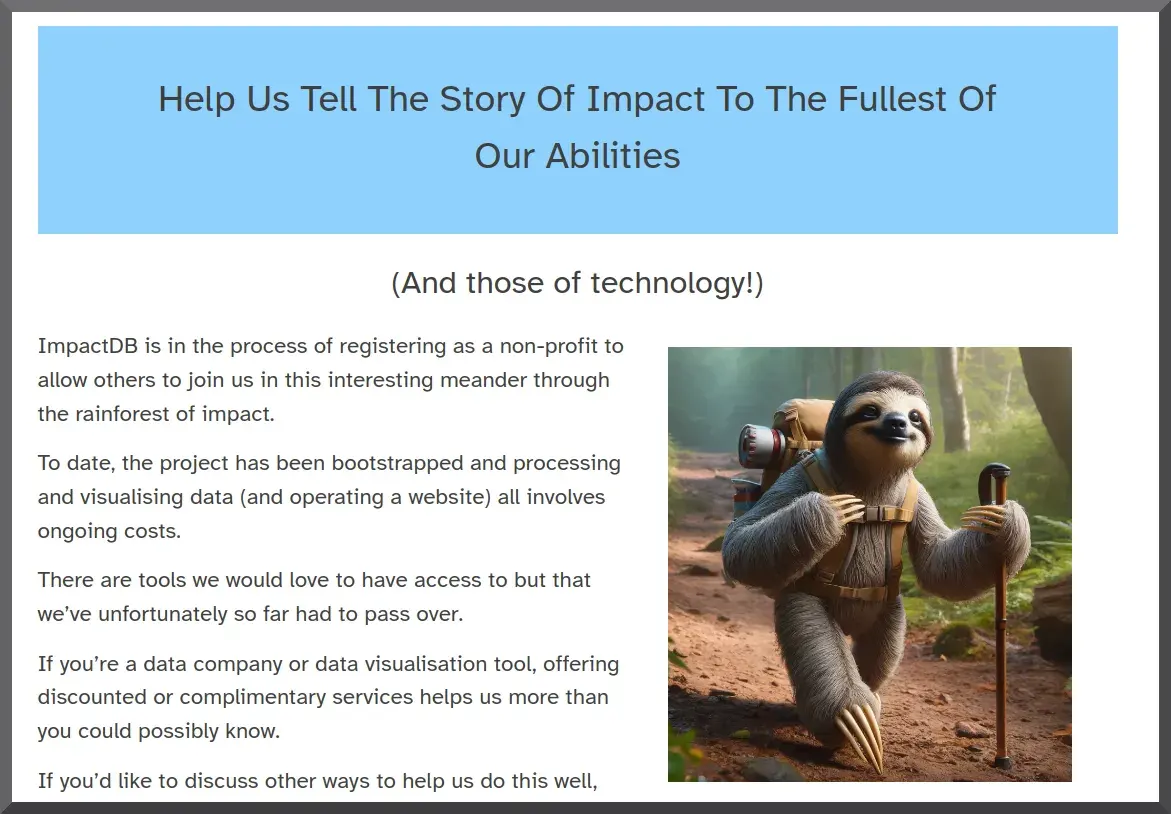
Penguins Applying Sunscreen To Highlight Climate Change
In other cases, I’ve tried to use DALLE to create images that help to tell the narrative I’m highlighting.
For instance, I asked DALLE to create an image of a penguin putting on sunscreen to communicate some of the sad and perverse situations that climate change is creating:
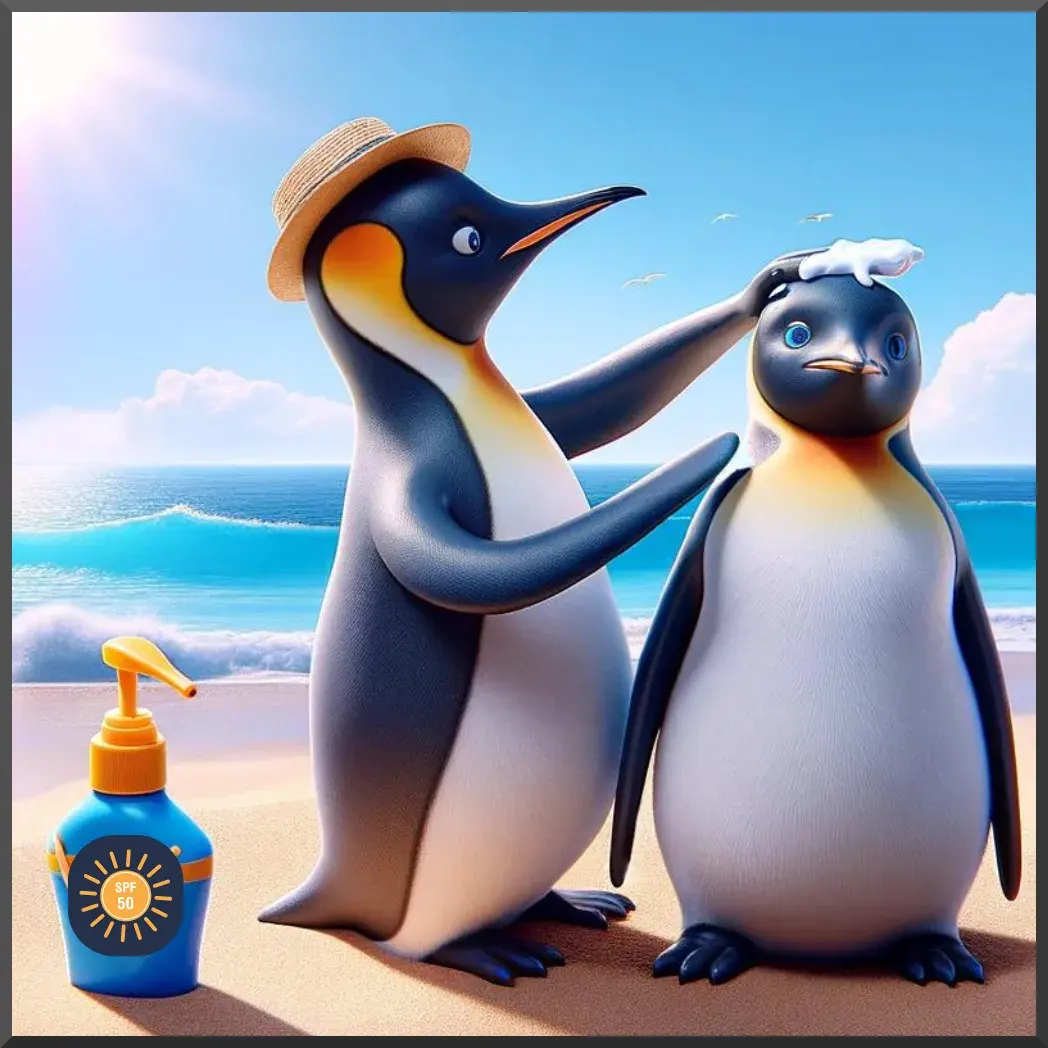
A Sloth In A “Money Wharehouse” To Explain The Idea Of Capital Wholesalers
My visual storytelling experiment also discussed the role and operation of “outcomes funds” which can (kind of) be thought of as wholesalers of capital-for-good.
To create an interesting visual for the story, I depicted a sloth in a sort of money wharehouse taking sacks of currency off of shelves and putting them into his impact trolley.
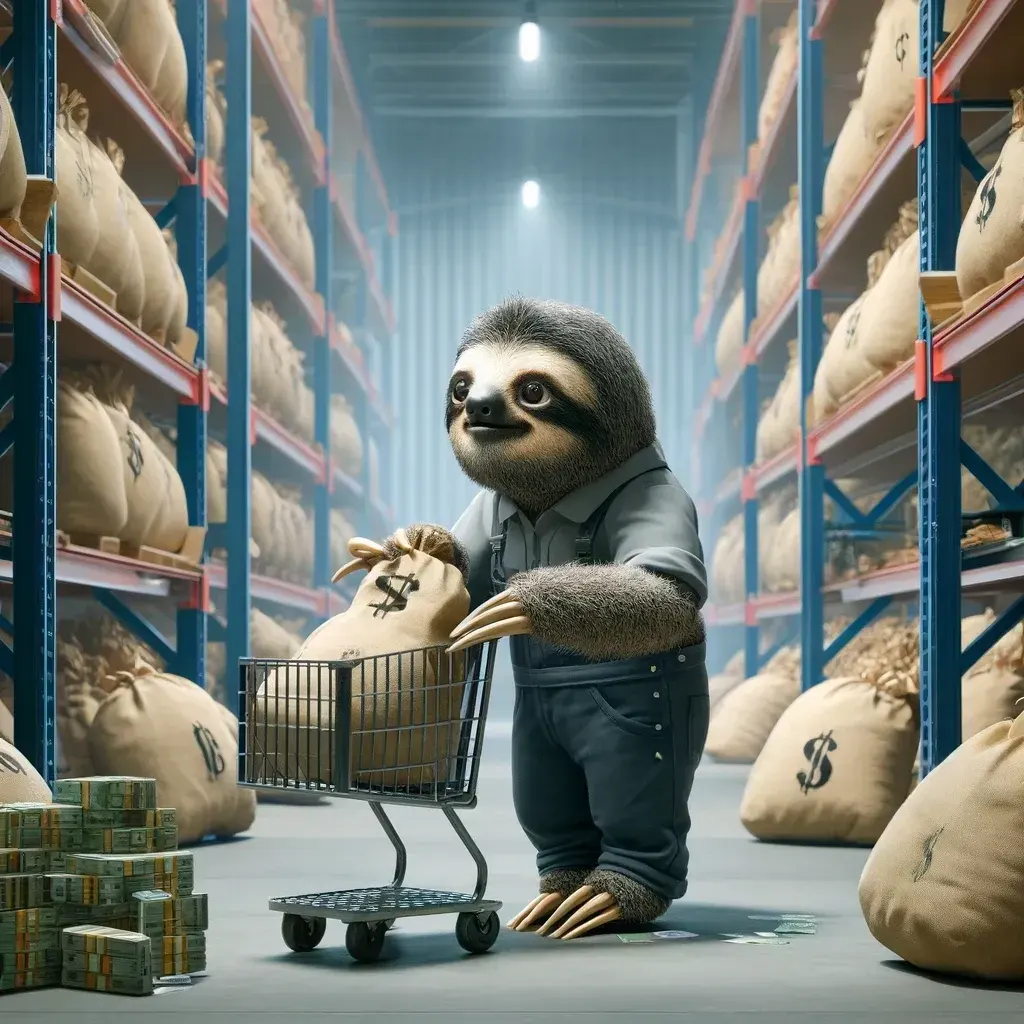
A Hurdle-Jumping Sloth Captures The Idea For Outcomes Funds
The piece also discusses a concept called pay for success. My initial idea to visualise this was to have one animal hand over a dollar note and the other one to trade it for an outcome. But I thought that it seeemed mercenary and sent the wrong message.
Instead, I asked DALLE to generate a sloth comopeting in a hurdle race clearing a hurdle that said “outcome”. Sloths of course are famous for being rather slow. So I thought that the image of a sloth moving at speed would add an additional amusing element to the generation.
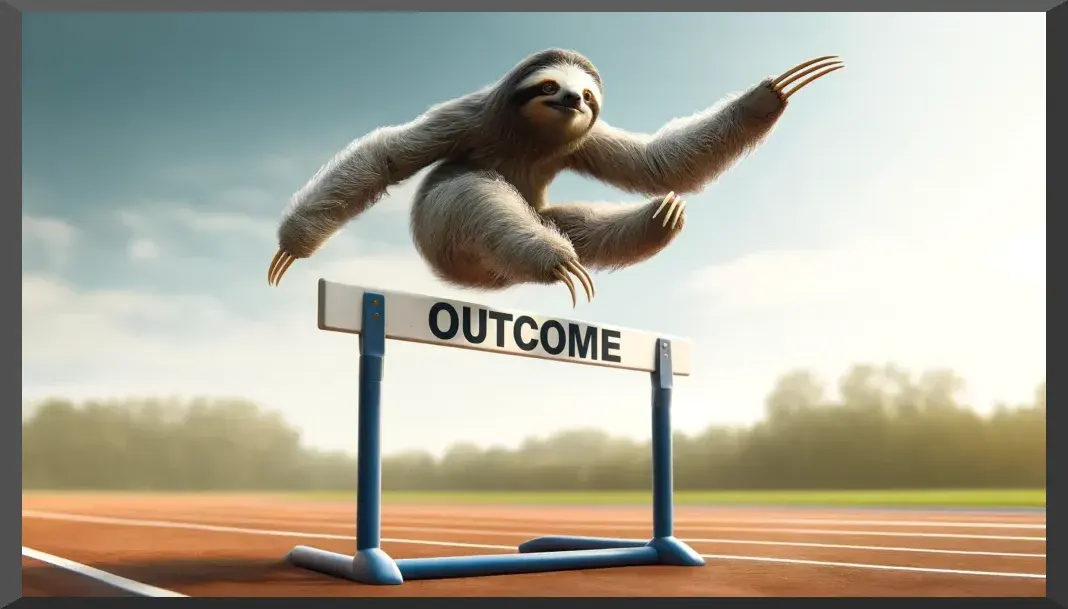
I like this one too which I created to try to explain how outcomes funds can catalyse impact bonds (by providing a steady stream of capital to pay for outcomes). I chose to depict a SIB and a DIB (two types of impact bonds) as two sloths talking to one another at a party. But each one is waiting for the outcomes fund to show up!
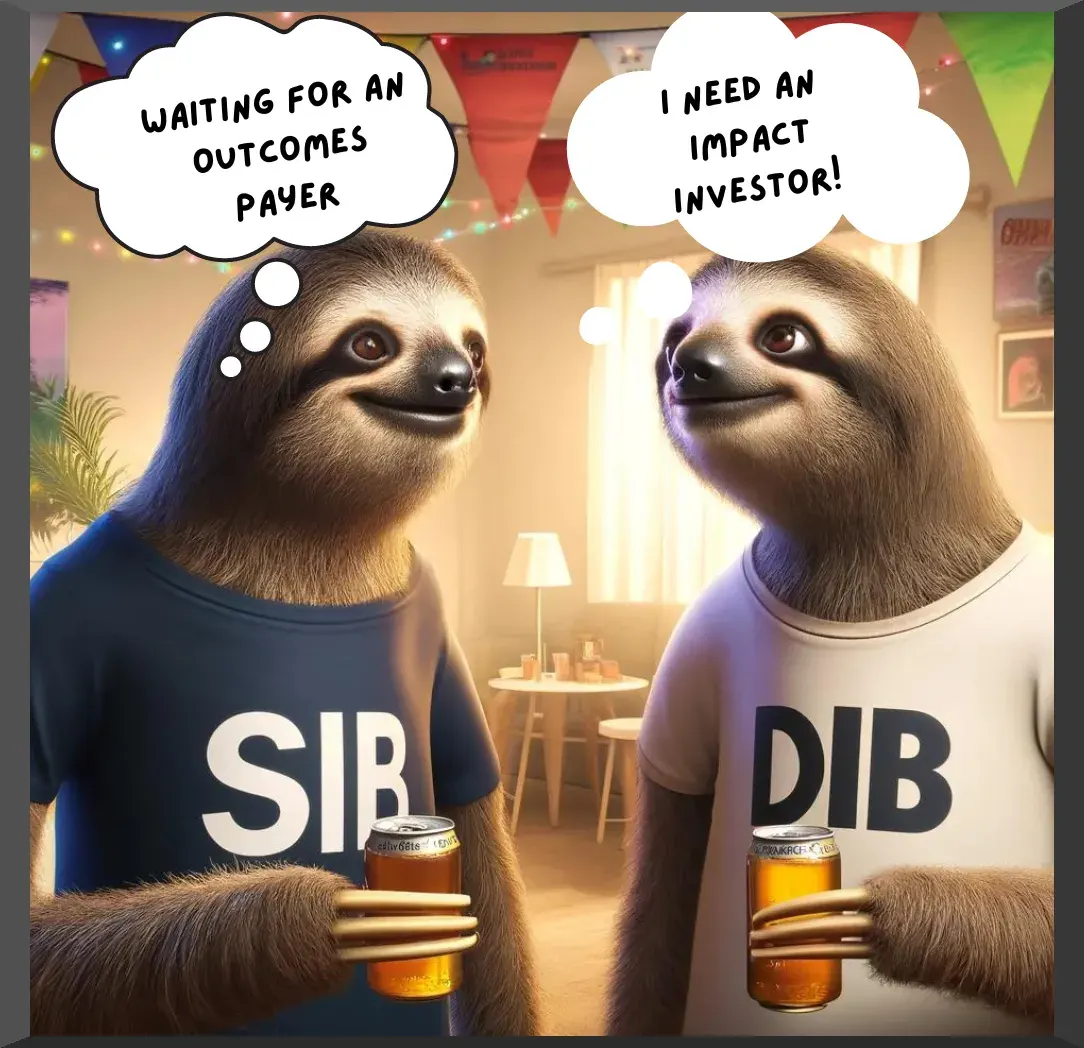
To discuss the advances in medical science, I chose to use rising life expectancies as a metric that’s not polarising.
Thinking of what an elderly sloth might look like was a rather saddening thought - and besides I couldn’t even imagine it myself.
Instead I asked that the sloth in the waiting room be wearing a fedora hat. I thought that this would be a tactful way of communicating that he was older. But he still has that delightful smile that makes so many fall in love with these beautiful creatures:
An Elegant Sloth In A Waiting Room Depicts The Rise In Life Expectancies

There is so much more than this that DALLE can do and I reckon that its potential in visual storytelling is enormous!
(I’m waiting for the ability to store characters so that they can be reused in later narratives and assume that if tools don’t already have this it will be made available soon).
But although it feels like a kind of magic, it’s also a lot of work and I should really go eat some dinner. I just imagined a sloth serving it to me on a plate and perhaps tomorrow will bring that image to life.
Until next time!